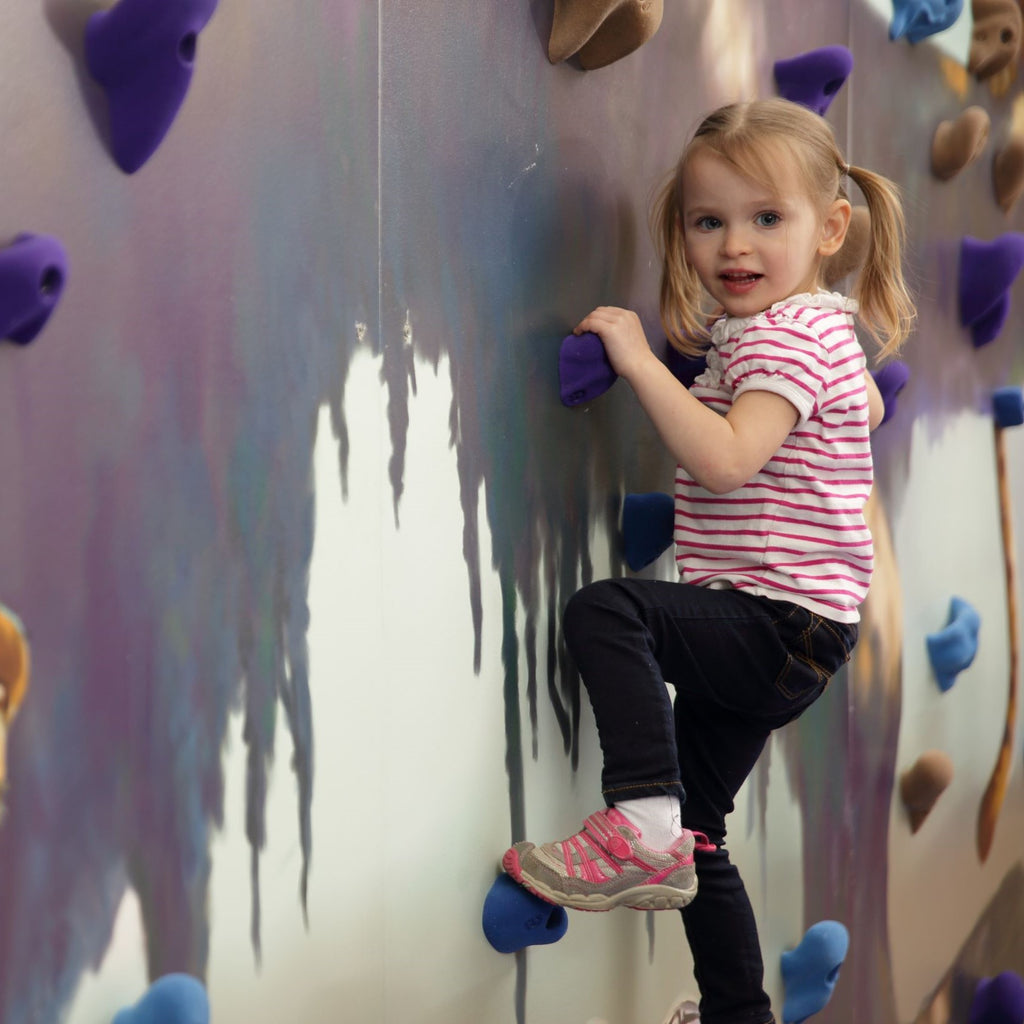
Rock Climbing with Young Children: Tips & Activities
Rock climbing with young children can begin as early as three years old. Climbing brings with it so many benefits for young learners. Not only does it help them develop strength, flexibility and motor skills, it builds confidence, independence and problem-solving abilities. We even offer a line of preschool climbing walls specifically made for early learners. To ensure success when you climb with preschoolers, we’ve put together some tips and share with you two of our favorite introductory climbing activities perfect for children aged 3-5.
Tips for Climbing on a Traverse Wall® with Early Learners
- Allow time for exploration of the climbing wall before actually climbing - start with the “Welcome to the Wall” activity below
- Provide 1 on 1 spotters until climbers gain the confidence, strength and skill for independent climbing
- Reinforce the safety rules, especially feet below red line and no jumping off the wall
- Supervise climbers at all times
- Encourage slow, controlled movement – climbing is not a race
- Celebrate individual progress – everyone advances at their own rate

Welcome to the Wall
Children are introduced to the Traverse Wall through a simulated climb.
Age Range: 3 and up
Materials:
- Poly Spots or marks made of tape, enough to place 3-4 in front of each climbing wall panel
Advance Set Up:
Place Poly Spots or marks on safety mats, about 8 inches away from the climbing wall.
Activity:
This activity is designed to introduce children to the Traverse Wall in a nonthreatening manner. By using this activity as a starting point, you will reduce the anxiety that some children may feel about climbing.
Position one child in front of, and facing, the first panel of the Traverse Wall. The rest of the children should line up at the start of the wall to create a line of children that can move along the front of the climbing wall. All at one time, all children should walk slowly in front of the wall, moving in the same direction, using only their hands on the hand holds and their feet on the spots on the floor. They should maintain at least an arm’s length of space between each other. They should feel the holds and pick ones they would use if they were actually climbing. They should pretend the spots on the floors are the holds for their feet and step on them. Have children travel across the front of the Traverse Wall two or three times in a simulated climb.
After several simulated traverses, discuss this experience. What did they notice about the climbing wall, holds, etc. What holds and spots did they use? Why? Invite children to share some words to describe what they think it will be like to climb on the Traverse Wall. They are now ready to learn the rules of the climbing wall and to begin climbing.

Bean Bag Toss
Children climb to bean bags and toss them onto/into a target.
Age Range: 3 and up
Materials:
- Bean bags (several per climbing wall panel)
- Targets (plastic hoops, baskets or shapes made of tape)
Advance Set Up: Place targets in various locations on the safety mats. Vary their size, shape and distance from the climbing wall to accommodate varying ability levels. You can also reinforce knowledge of shapes by creating circles, squares, triangles, etc. Place bean bags on some of the hand holds across the length of the Traverse Wall, several on each climbing wall panel. Place them high and low for variety.
Activity: Children climb to a bean bag, stop, stay on the Traverse Wall and toss the bean bag into a target. Be sure children are spaced out from each other, one per climbing wall panel. Children should also only remove one bean bag per panel to keep the activity moving along. The instructor will need to replace bean bags to the wall periodically.
For additional ideas and inspiration about climbing with preschool-age children, be sure to read our past blog post that features the wonderful work going on at Eastern Connecticut State University's Child and Family Development Resource Center (CFDRC).

Leave a comment